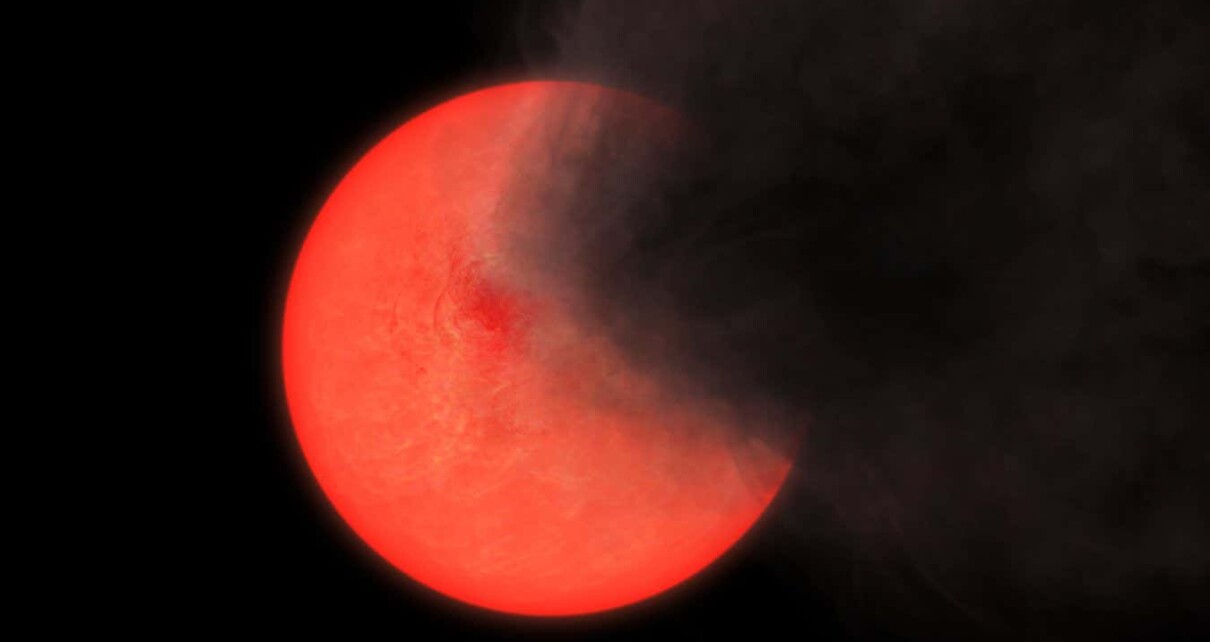[ad_1]

Artist’s impression of a red giant star throwing out a cloud of smoke and dust
Public domain
Astronomers have discovered stars that appear to be blowing out plumes of smoke. The “old smokers”, as they have been nicknamed, challenge our ideas of what happens at the end of giant stars’ lives.
Generally, when red giant stars grow old, they begin to pulsate. They become brighter, dimmer, brighter again and so on, while simultaneously throwing off their outer layers. These pulsating stars are called Mira variables, and it is thought that the pulses are caused by waves of plasma travelling within the stars that help them shed material into space.
When Philip Lucas at the University of Hertfordshire in the UK and his colleagues peered towards the centre of our galaxy using the Visible and Infrared Survey Telescope for Astronomy in Chile, they saw many Mira variables – but they also spotted something else. “These old red giants not doing any pulsating – they’re just sitting there as normal and then suddenly dimming for six months to several years,” says Lucas. “This is almost completely unheard of.”
Further observations revealed that the stars seem to be emitting huge plumes of dusty smoke that prevents their starlight reaching us. The smoke takes months to years to dissipate, offering an explanation for the prolonged dimming. This may be a new way for giant stars to end their lives, but it is unclear how or why it is happening.
The enormity of these stars gives them a powerful gravitational field that makes it difficult for them to blow any of their material away. The fact that they are not pulsating makes it even harder to explain the plumes of smoke. Lucas suggests that it may be connected to the high concentration of relatively heavy elements near the galactic centre, where most of these old smokers are located. That could make it easier for grains of dust to form and then float away as smoke. “It’s quite possible that it’s not that, but it’s the only thing that’s really weird about that region that could be connected,” he says.
The researchers are now looking for more of these strange stars – they have found about 90 so far, Lucas says. Their prevalence suggests that they could be important to the environment in the centre of the Milky Way, and maybe even more so in other galaxies with more heavy elements.
Topics:
[ad_2]
Source link




